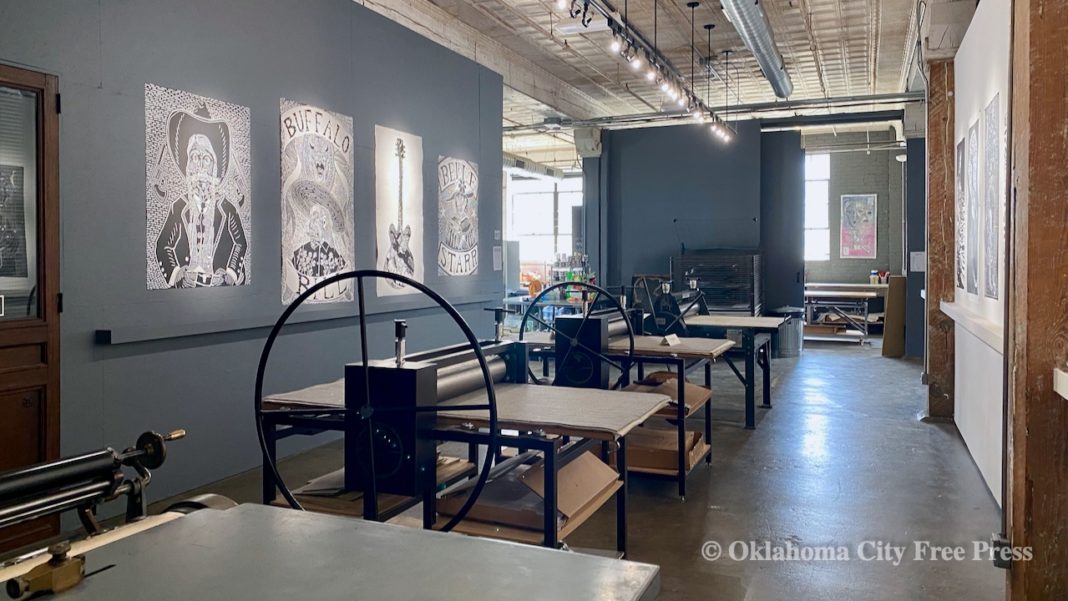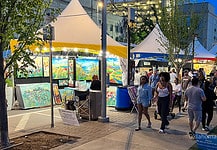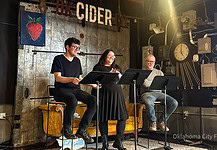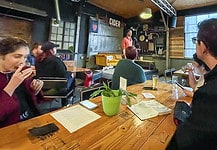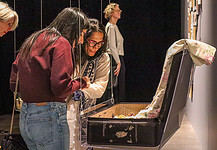Last Updated on April 3, 2021, 8:05 PM | Published: April 3, 2021
OKLAHOMA CITY (Free Press) — This week, Artspace at Untitled launched an exhibition featuring a diverse array of artists and their work with woodblock printing at the exhibition “Big Ink.”
This ancient and dynamic technique brings to the fore the “possibilities of creating,” as Fernando Calvillo, Design Manager at Artspace, puts it. These possibilities reflect not only the individual creativity of the individual displayed artists, but the possibilities of art in composing and constituting the community.
Woodblock printing as a tool for media representation has a long and dated lineage.
From the famed Japanese masterpiece, The Wave off Kanagawa to its early role in illustrating the first newspapers and books in Europe, woodblock printing has been a formative branch of art and history. The technique, however, is extremely rigorous, as Calvillo explains.
First, artists trace and draw their image onto a panel of wood, like plywood. They then carve out the negative space they don’t want colored in their piece. Finally, they cover what’s left in ink, and press it against the fabric or paper to create an inked image, like a massive, arduously made stamp. The length and effort of the process would, at first glance, make it easy to assume it is merely historical.
It is all the more pleasantly surprising then, to visit Artspace and see artists revisit woodblock printing, not as a tool, but a medium of self-expression.
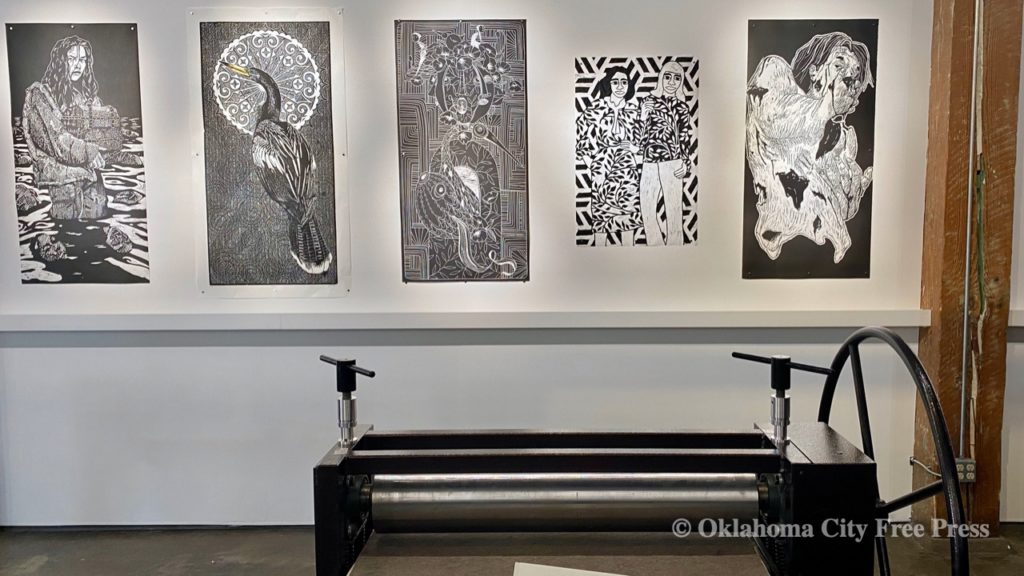
Calvillo draws attention to the diversity of aesthetics among the artists.
“All of them use the same technique, yet everyone has a different approach, and different possibilities,” Cavillo told me. “You know, some did very realistic imagery, some are more abstract.”
Particularly remarkable is the ability of the artists to literally carve shades of ink into their images, in what is no doubt an extremely meticulous task.
The skills required of woodblock printing require the artist to “think backwards,” and in doing so, contemplate an entirely reversed approach to self-expression.
The beauty of this process lies not only in the sharp contrasts of black ink and white background, but also in the ability of the artists to shape such a detailed method to suit their individual purposes, using a technique and voice that belongs to all of them to say something unique to themselves.
Anticipating Steamroller
Artspace’s exhibition of Big Ink’s work in woodblock printing anticipates the Steamroller Print Festival on April 24th.
The festival is a community event where artists carve woodblocks and a “five-ton steamroller comes and prints those. The five-ton steamroller is like the big press for us.”
The event brings together local vendors, children’s events, and members of the Deep Deuce community to enjoy and participate in art. Cancelled last year, 2021’s Steamroller Print Festival promises to be a must-visit event, especially as its sister art festivals are postponed.
What is unique to Artspace’s event is its commitment to “embrace the Deep Deuce district and community,” and provide its community with sources of joy and art after what has been a rough year for many. This role for galleries, as centers of community within their homes and cities, is a role many museums and galleries have neglected over the past decade.
Artspace’s efforts, however, to engage with and provide for its community, signals a heartening change in the art world at large. Big Ink’s exhibition at Artspace is, therefore, a marvelous opportunity to cherish an art form whose earliest practitioners worked alongside the earliest journalists to serve their communities, and contemplate the beauty of time and effort in self-expression.
Devraat Awasthi is an art reporter for Free Press, a full-time law student at the University of Oklahoma, and is interested in pop culture’s role in public communities.
